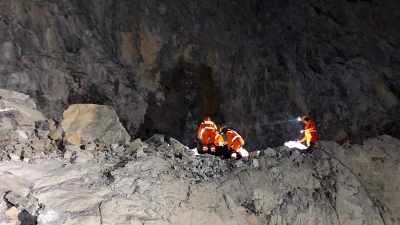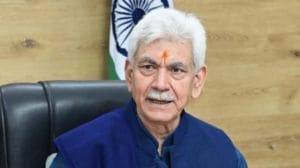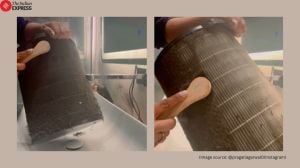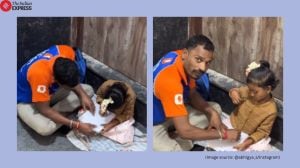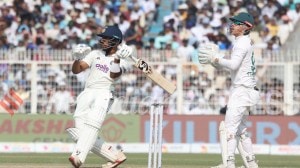Perfect PSLV-C6 puts Cartosat-I, Hamsat in orbit
Throwing up a haze of fumes, smoke and debris, the PSLV-C6 took off from the Sathish Dhawan Space Centre at 10.15 am today, amid loud cheers...

Throwing up a haze of fumes, smoke and debris, the PSLV-C6 took off from the Sathish Dhawan Space Centre at 10.15 am today, amid loud cheers from ISRO bosses in the control room.
After 18.02 minutes from the launch, it injected India’s eleventh remote-sensing satellite, 1,560-kg Cartosat-I, into the 627-km polar Sun Synchronous Orbit. And as stipulated, put the 42.5-kg satellite Hamsat into orbit, 40 seconds after Cartosat’s injection. This is the highest payload weight that PSLV has launched so far.
President A.P.J. Abdul Kalam, who had come down from Delhi specially for the launch, was seen congratulating ISRO Chairman G. Madhavan Nair, immediately after the heat shield broke open to launch the satellite in orbit.
‘‘The country is proud of you. I congratulate all of you who have worked to make this mission a success,’’ the President said. He said the Indian Space Programme has come a long way since a SLV-3 was used to launch a 40-kg satellite into the Lower Earth Orbit when he was the project director in July, 1980. ‘‘Now, we can launch a satellite 100 times heavier into the same orbit.’’
After this second successful launch during his tenure, Nair said: ‘‘We had a fantastic launch and we have got the accurate trajectory.’’ He added that he was very happy with the success of the Rs 400-crore Second Launch Pad (SLP).
‘‘Despite exposure to bad weather, sun and rain, the vehicle has performed its best,’’ Nair said. He said the minimum launch pad occupancy offered by the SLP would give them a possibility to launch at least six vehicles per year. ‘‘As India’s need is only four launches a year, we can use the available time for launching other country vehicles on a commercial basis,’’ he added.
At a press conference, Nair said the ground-control facility in Sriharikotta High Altitude Range has received the first signals from Cartosat-I. This cartography satellite would be operational within 48 hours and the pictures from the two panchromatic, high resolution (2.6 metre) cameras would be received at various ground stations of ISTRAC, both in India and abroad.
The ISRO chairman added that the commercial operation of this satellite would only be decided after it completes mapping our nation.
‘‘We have received the first signals from Hamsat, the 42.5 kg, piggyback satellite which will be of great help to the Amateur Radio Operators (HAMs), at our Lucknow ground station,’’ he said.





- 01
- 02
- 03
- 04
- 05


